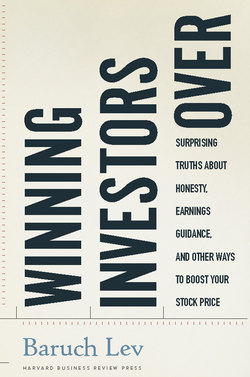Читать книгу Winning Investors Over - Baruch Lev - Страница 32
На сайте Литреса книга снята с продажи.
Things Go Better with Coke (When Pushed a Bit)
ОглавлениеFrom 1997 to 1999, Coca-Cola engaged in an elaborate program of “gallon pushing” in Japan, which made the difference, according to the SEC, “between Coca-Cola meeting or missing analysts’ consensus or modified consensus earnings estimates for 8 out of 12 quarters.”19 What was this innovative gallon-pushing strategy that was kept secret—as is the venerated Coke formula—from the public? In 1997 and onward, the Coca-Cola (Japan) Company substantially improved credit terms to Coke bottlers to induce them to purchase increased quantities of concentrates, beyond those required by customer demand. According to the SEC, these gallon-pushing efforts increased bottlers’ inventory of concentrates by 60 percent between 1997 and 1999, while sales rose by 11 percent only. The enhanced “pushed gallons” augmented Coca-Cola’s revenues and earnings from 1997 to 1999, a period of intensifying competition. The gallon-pushing program enabled Coca-Cola, according to the SEC, to “publicly maintain between 1996 and 1999 that it expected its earnings per share to continue to grow between 15 percent and 20 percent annually [despite the challenging competitive environment].”20
Typical to most revenue-enhancing schemes, borrowing from the future leads to deficits in subsequent quarters, requiring an acceleration of the manipulation. Unless business improves dramatically, this is bound to crash sooner rather than later. Indeed, by the end of 1999, as concentrate inventories at Coke bottlers reached exorbitant levels, it was no longer feasible to continue the gallon-pushing program, and, on January 26, 2000, Coca-Cola filed a Form 8-K with the SEC, announcing a worldwide concentrate-inventory-reduction plan, stating that “the management of Coca-Cola and its bottlers, specifically including bottlers in Japan, had jointly determined that opportunities exist to reduce concentrate inventory carried by bottlers.” This, artfully worded statement, says the SEC, was false and misleading, “describing the inventory reduction as a joint proactive efficiency measure between Coca-Cola and its bottlers,” while omitting any reference to the multiyear gallon-pushing program that created the urgent need to drastically reduce inventory levels.
The important lesson from this case is that when you cease mani-pulating, come out with a clear and complete mea culpa, rather than painting the pig with lipstick (i.e., “an inventory reduction plan”).
